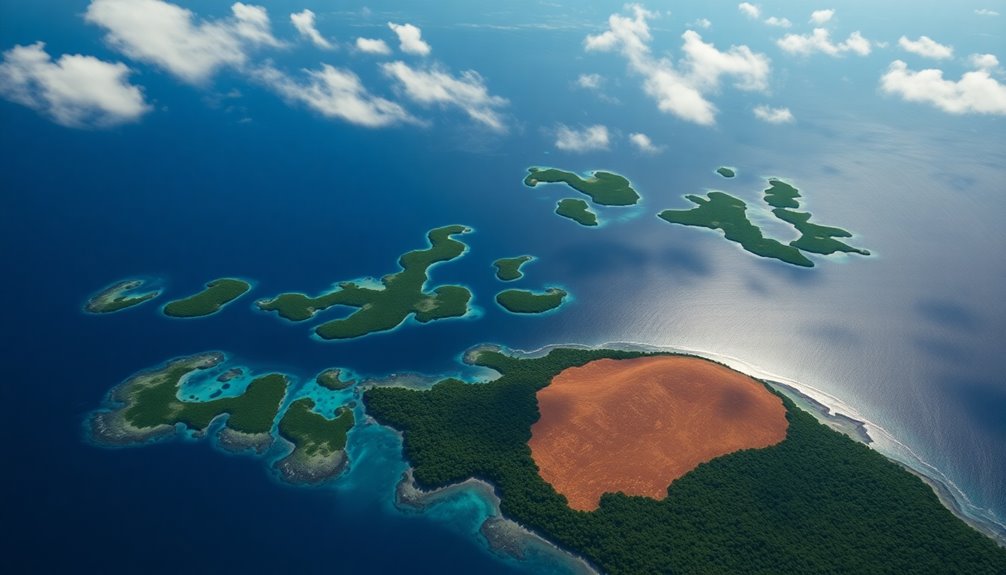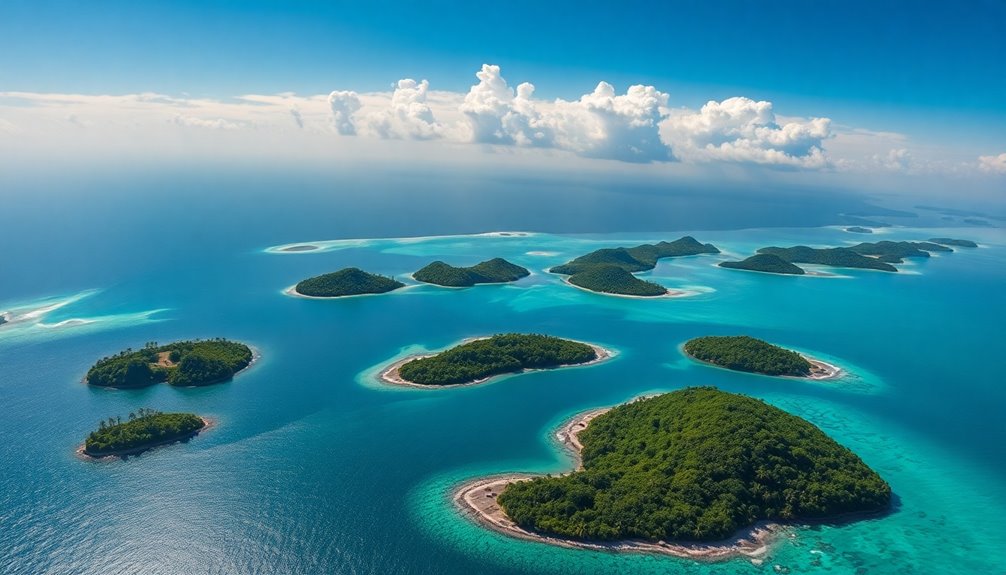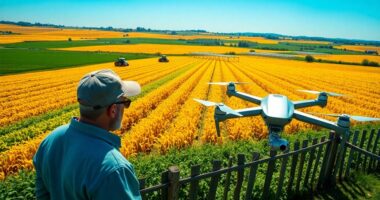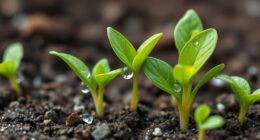If you're looking for fresh strategies for water security in the Pacific Islands, it's crucial to understand the pressing challenges. With only 55% of people having access to basic drinking water, innovative solutions like rainwater harvesting, desalination, and community involvement are essential. Climate change exacerbates issues like saltwater intrusion and unpredictable rainfall, making collaboration vital. Emphasizing the integration of traditional knowledge with modern technology can lead to sustainable management. You'll discover more about effective initiatives and partnerships that can drive change.
Key Takeaways
- Implementing rainwater harvesting systems is essential for enhancing water collection in Pacific Islands facing water scarcity.
- Integrating traditional knowledge with modern technology can improve water resource management and resilience to climate change impacts.
- Collaborating regionally and engaging community members ensures sustainable strategies for addressing water security challenges.
- Exploring solutions like desalination and infiltration galleries can provide alternative freshwater sources in low-lying atoll nations.
- Commitment to climate-resilient policies is crucial for promoting inclusive water management and ensuring long-term water security.

Water security in Pacific Islands is a pressing issue, especially as climate change and rising sea levels threaten already limited freshwater resources. You mightn't realize that only 55% of Pacific Islanders have access to basic drinking water, with even fewer enjoying sanitation services. This staggering statistic reveals a harsh reality: water scarcity impacts health, security, and livelihoods across the region.
Water security in Pacific Islands is critical, with only 55% of residents having access to basic drinking water.
As rising sea levels encroach, groundwater supplies face saltwater intrusion, particularly in low-lying atolls with minimal hydrogeological capacity. Climate change compounds these challenges, leading to more frequent droughts and unpredictable rainfall. You may find it alarming that temperatures are projected to rise by 2-4.5°C by 2100, further stressing already fragile water supplies. This climate unpredictability increases heatwaves and exacerbates coastal erosion, jeopardizing freshwater sources. The Water Scarcity project aims to enhance water resources management in response to these alarming challenges.
As a result, achieving Sustainable Development Goal 6 (SDG6) becomes a daunting task for Pacific Island states. Fortunately, regional collaborations are stepping in to tackle these issues. Organizations like the Pacific Community (SPC) work alongside island countries to improve water security through innovative projects.
With New Zealand as a long-term partner, these efforts focus on knowledge sharing and strategy development for effective water management. Engaging both government and community members, these partnerships aim to integrate traditional knowledge with modern solutions.
Technological advancements also play a crucial role in addressing water scarcity. Infiltration galleries and horizontal wells are being explored for efficient freshwater extraction, while desalination is gaining traction in areas like Kiribati and Tuvalu. Rainwater harvesting systems are becoming essential, ensuring communities can collect and store vital water resources.
Ultimately, addressing water security in the Pacific Islands requires commitment from all stakeholders. You can support initiatives that prioritize climate-resilient water management and promote policies that consider gender equality, disability, and social inclusion. By working together, we can forge a sustainable path toward a secure water future for these vulnerable communities.
Frequently Asked Questions
What Are the Main Causes of Water Scarcity in Pacific Islands?
Water scarcity in Pacific islands stems from several key factors.
You'll notice geographical limitations, like small land areas and limited groundwater. Climate change exacerbates these issues, bringing rising sea levels and more severe droughts.
Variability in rainfall further complicates reliable water supply. Additionally, population growth strains existing resources, while inadequate infrastructure hampers effective management.
All these elements create a challenging landscape for ensuring sustainable water access in these vulnerable regions.
How Do Climate Change Impacts Water Security in These Regions?
Climate change significantly impacts water security in Pacific Islands. As temperatures rise, you'll notice increased heatwaves and erratic rainfall, straining freshwater resources.
Sea level rise threatens to salinate groundwater, while extreme weather events disrupt water supply chains.
Pollution and catchment degradation compromise surface water quality, making it harder for communities to access clean drinking water.
Ultimately, these changes create urgent challenges that require innovative strategies to ensure sustainable water availability for everyone.
What Role Do Local Communities Play in Water Management Strategies?
In the tapestry of water management, you weave the threads of community strength and trust.
Local communities play a pivotal role, forming committees that oversee and maintain water systems. You engage in collective action, adapting strategies to fit your unique context.
Are There Successful Case Studies of Water Security Initiatives in the Pacific?
Yes, there are successful case studies of water security initiatives in the Pacific.
For instance, Tuvalu's coastal adaptation project has effectively reclaimed land to protect freshwater sources for a significant portion of the population.
In the Marshall Islands, improved rainwater harvesting systems have increased storage capacity.
Additionally, community-based rainwater harvesting practices have enhanced water availability, showcasing how local engagement and traditional methods can significantly contribute to effective water management strategies.
How Can Technology Improve Water Access in Remote Pacific Islands?
You can leverage technology to significantly improve water access in remote areas. By implementing desalination systems, you'll convert seawater into fresh water, ensuring a reliable supply.
Using innovative groundwater extraction methods can also enhance access while protecting resources. Additionally, employing sensor technology allows for real-time monitoring of water quality, helping you identify and address contamination quickly.
Engaging local communities in these tech-driven solutions ensures they're tailored to meet your specific needs effectively.
Conclusion
In the face of climate change and rising demand, your proactive approach to water security in the Pacific Islands is crucial. By embracing innovative strategies and fostering community resilience, you can turn the tide against water scarcity. Remember, just as a single drop creates ripples in a pond, your actions today can lead to a wave of change for future generations. Let's work together to ensure these islands thrive, not just survive, in the years to come.









